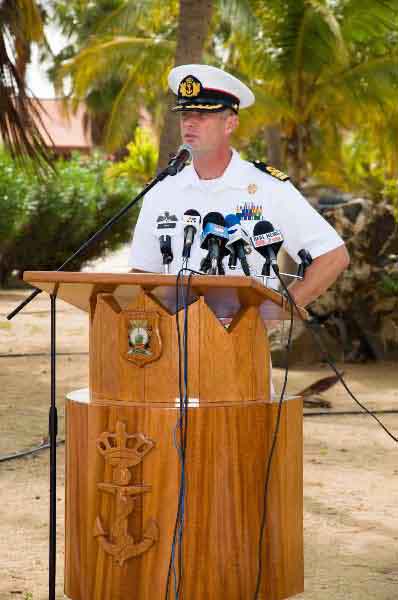
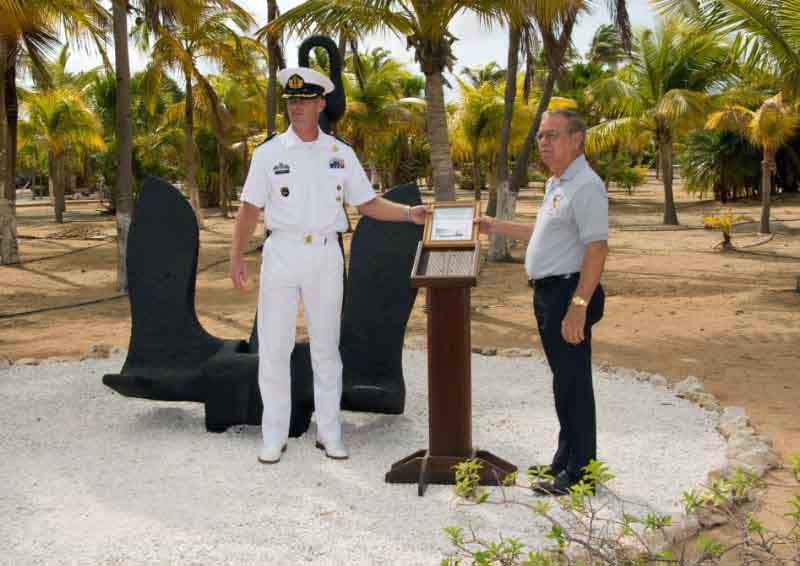
;%20Andre%20Loonstra;%20Toine%20vd%20Klooster;%20Dufi%20Kock.jpg)
Edward Yarazagaray, Gregory Paesch, Werleman, Dick de Bruin (in uniform), Andre Loonstra, Toine van de Klooster and Dufi Kock
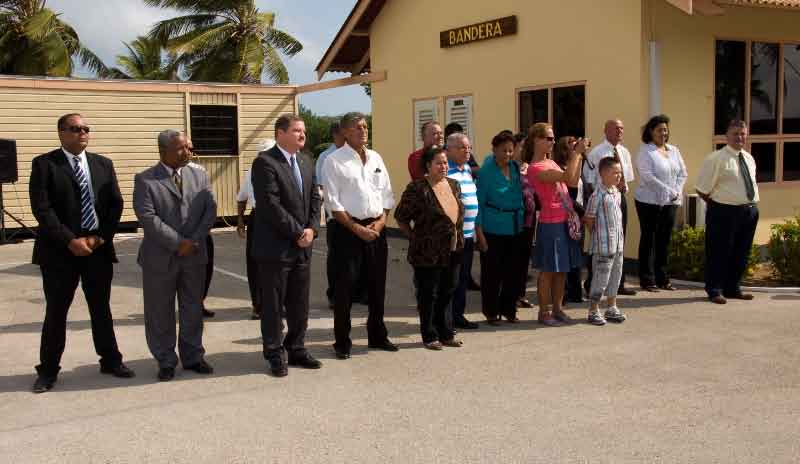
Prime Minister, Mr. Mike Eman (third from left), and other guests.
SS Oranjestad Committee in the front row and Officers from the base in next two rows.
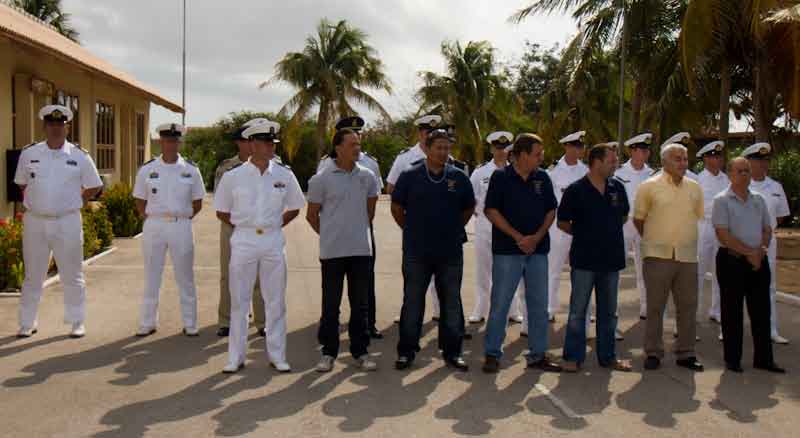
Another shot of the SS Oranjestad Committee in the front row and Officers from the base behind.
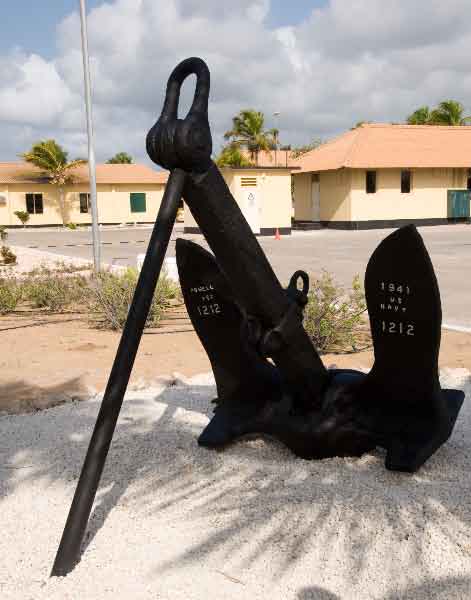
The anchor monument to the four Marines who gave their lives in 1942 disarming a German torpedo on Eagle Beach.
These man are:
DE MAAGD, Dirk Adrianus Cornelis born in Tholen, Holland in 1895; Torpedo Demolition Major.
OOSSE, Pieter born in Arnhem, Holland; 2nd Lieutenant in Curacao.
KOOYMAN, Leonardus born in Den Haag, Holland on March 3, 1917; 1st Class Marine.
OGELENZANG, Johannes born in Dordrecht, Holland on November 18, 1916; 2nd Class Marine.
These were the marking that were found on the anchor.
This is what the press release said about the dedication.
The Anchor Ceremony at the Savaneta Camp
(By Dufi Kock)
Yesterday the diving team who salvaged an anchor lying at the bottom of ocean for 68 years, officially donated it to Commandant Edwin Hofma of the Savaneta Camp which was installed as a monument in honor of the four Dutch militaries who lost their lives while defusing a torpedo at the Eagle Beach on February 18, 1942.
Commandant Hofma, in the presence of Prime Minister, Mr. Mike Eman and invited guests, during the official ceremony spoke a little of the presence of the warships during the Second World War in Aruba because of the involvement of the Lago refinery. As far as the anchor, he said that the efforts and the cooperation of the SS Oranjestad diving team were excellently displayed to salvage the anchor from the depth of the ocean. He had words of praise for the team. He also thanked the Savaneta Camp staff for the role of defense which made this all possible. The spot where the anchor has now been placed is just temporary, but in the latter part 2012 it will officially be placed in a more prominent spot at the entrance of the gate.
According to Commandant Hofma, this anchor is historic, it is a sustainable symbol which is anchored and symbolizes something to be acknowledged. As far as the part of history, he explained that on this day, February 18th is exactly 68 years ago that four Dutch militaries lost their lives at Eagle Beach. During the Second World War Aruba was of strategic importance to the allies. Important because the refinery at that time was one of the largest and most modern oil refineries of the world. The refinery was producing high quality aviation fuel, which was important for the operation of the allies. This was notable in Germany. That made the Germans send submarines in the Caribbean area to attack oil tankers and refineries. The submarine U-156 arrived in the Aruban waters and fired torpedoes on the SS Oranjestad and SS Pedernales and subsequently to the tanker Arkansas at the Eagle Pier. One of the torpedoes stranded on the Eagle Beach and during an intent to defuse it, four Dutch militaries lost their lives.
As President of the SS Oranjestad Propeller Committee, Dufi gave a speech: We have a committee, a group of divers who are exercising all efforts in their work not just to salvage something from the bottom of the sea, nor to harm the environment, but to work for a goal and today we confirm our first step leading to more goals in the future, but always respecting the laws.
Dufi continued to say that last year in April some divers salvaged a propeller from the SS Oranjestad lake tanker. The decision to install it as a monument is awaiting the approval of the government. Subsequently, they decided to dive at the other end of the island, at the Eagle Beach. As we all know that the Eagle refinery also played an important role during WWII. It was in this area that U-156 fired three torpedoes and one landed, unexploded, on the Eagle Beach. Immediately a Dutch demolition team came from Curacao to try to defuse the torpedo. But unfortunately they lost their lives when the torpedo exploded. Two Aruban soldiers, Mess. Bruno Bremer and Jacobo Kock, also received severe damage to their sense of hearing because of this explosion. Dick de Bruin, the leader of the diving team, including Toine van de Klooster and Andre Loonstra with the help of Edward Yarzagaray and Gregory Paesch, and others, worked very hard for months to salvage this anchor from a bottom of 18 feet. Then towed it Varadero to lift it.
Dufi continued to say that the intention of the diving team was to contribute to the history of Aruba and the Second World War. Dufi said that he spends hours on histories of the island and WWII. Today he is very happy and honored to be part of the team. Congratulations guys ..keep up the good work.